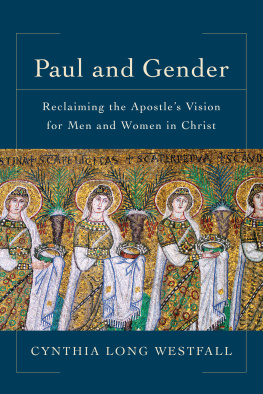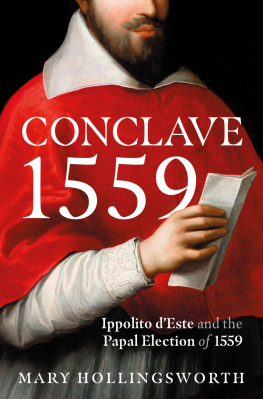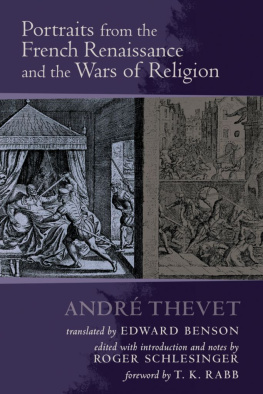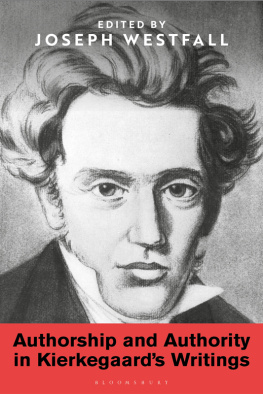TRANSCRIBERS NOTES:
Obvious print and punctuation errors were corrected.
The cover image has been created, added to the project and placed in public domain.
The
Wars of Religion in France
1559-1576
VIEW OF PARIS
From a sketch by Jacques Callot (1592-1635).
The
Wars of Religion in France
1559-1576
The Huguenots Catherine de Medici
and Philip II
BY
James Westfall Thompson, Ph.D.
Associate Professor of European History in
the University of Chicago
CHICAGO:
THE UNIVERSITY OF CHICAGO PRESS
LONDON:
T. FISHER UNWIN, 1 ADELPHI TERRACE
1909
[ii]
[iii]
[iv]
Copyright 1909 By
The University of Chicago
Published May 1909
Composed and Printed By
The University of Chicago Press
Chicago, Illinois, U. S. A.
TO
MARY HAWES WILMARTH
THE LARGESS OF WHOSE SPIRIT HAS MADE THE
WORLD RICHER AND LIFE NOBLER
PREFACE
No one acquainted with the history of historical writing can have failed to observe how transitory are its achievements. Mark Pattisons aphorism that history is one of the most ephemeral forms of literature has much of truth in it. The reasons of this are not far to seek. In the first place, the most laborious historian is doomed to be superseded in course of time by the accumulation of new material. In the second place, the point of view and the interpretation of one generation varies from that which preceded it, so that each generation requires a rewriting of history in terms of its own interest.
These reasons must be my excuse for venturing to write a new book upon an old subject. It is now nearly thirty years since the appearance of the late Professor Henry M. Bairds excellent work, The Rise of the Huguenots (New York, 1879), and little that is comprehensive has since been written upon the subject in English, with the exception of Mr. A. W. Whiteheads admirable Gaspard de Coligny, Admiral of France (London, 1904). But the limitations imposed by biographical history compel an author inevitably to ignore movements or events not germane to his immediate subject, which, nevertheless, may be of great importance for general history. Moreover, a biography is limited by the term of life of the hero, and his death may not by any means terminate the issue in which he was a factoras indeed was the case with Coligny.
An enumeration of the notable workssources and authoritieswhich have been published since the appearance of Professor Bairds work may serve to justify the present volume. First and foremost must be mentioned the notable Lettres de Catherine de Mdicis, the lack of which Ranke deplored, edited by the late Count Hector de la Ferrire and M. Baguenault de la Puchesse (9 vols.), the initial volume of which appeared in 1880. Of diplomatic correspondence we have the Ambassade en Espagne de Jean Ebrard, seigneur de St. Sulpice de 1562 1565 (Paris, 1902), edited by M. Edmond Cabi, and th Dpches de M. Fourquevaux, ambassadeur du roi Charles IX en Espagne, 1565-72, in three volumes, edited by the Abb Douais (Paris, 1896). Other sources which have seen the light within the last three decades are M. Delabordes Vie de Coligny (3 vols., 1877-), the title of which is somewhat misleading, for it is really a collection of Colignys letters strung upon the thread of his career; the Baron Alphonse de Rubles Antoine de Bourbon et Jeanne dAlbret (4 vols., 1881); M. Ludovic Lalannes new annotated edition of DAubign (1886), and the new edition of Bezas Histoire ecclsiastique (ed. of Baum, 1883). Finally, among sources should be included many volumes in the Calendar of State Papers. Professor Baird has rightly said that Too much weight can scarcely be given to this source of information and illustration. His praise would probably have been even greater if he could have used the correspondence of Dale and Smith as freely as he did that of Throckmorton and Norris.
When we pass from sources to authorities the list of notable works is even longer. La Ferrires Le XVIe sicle et les Valoisthe fruit of researches in the Record Office in Londonappeared in 1879; M. Fornerons Histoire de Philippe II (4 vols.) was published in 1887, and is even more valuable than his earlier Histoire des ducs de Guise (1877). Besides these, in the decade of the 80s, are Duriers Les Huguenots en Bigorre (1884); Communays Les Huguenots dans le Barn et la Navarre (1886); Lettenhoves Les Huguenots et les Gueux (1885); the baron de Rubles Le trait de Cateau-Cambrsis (1889), and the abb Marchands Charles de Coss, Comte de Brissac (1889). M. de Crues notable Anne, duc de Montmorency appeared in the same year and his no less scholarly Le parti des politiques au lendemain de Saint Barthlemy three years later. M. Marlets Le comte de Montgomery was published in 1890; M. Georges Weills Les thories sur le pouvoir royal en France pendant les guerres de religion, in 1891; M. Henri Hausers Franois de La Noue in 1892; M. Bernard de Lacombes Catherine de Mdicis entre Guise et Cond in 1899, and, most recently of all, M. Courteaults Blaise de Montluc (1908). Many contributions in the Revue historique, the Revue des questions historiques, the English Historical Review, the Revue dhistoire diplomatique, the Revue des deux mondes, and one article in the American Historical Review, January, 1903, by M. Hauser, The Reformation and the Popular Classes in the Sixteenth Century, are equally valuable, as the notes will show. I have also consulted many articles in the proceedings of various local or provincial historical societies, as the Socit de Paris et de lIle de France; the Socit de lhistoire de Normandie, the Socit dhistoire et darchologie de Genve, etc., and the admirable series known as the Bulletin de la Socit du protestantisme franais, which is a mine of historical lore.
While the present work falls in the epoch of the French Reformation, no attempt has been made to treat that subject in so far as the Reformation is assumed primarily to have been a religious manifestation. Doctrine, save when it involved polity, has been ignored. But into the political, diplomatic, and economic activities of the period I have tried to go at some length. As to the last feature, it is not too much to say that our interpretation of the sixteenth century has been profoundly changed within the last twenty years by the progress made in economic history. Such works as Weisss La chambre ardente and Hausers Ouvriers du temps pass have revolutionized the treatment of this subject.
Such an interpretation is merely a reflection of our own present-day interest in economic and social problems. In this particular it is the writers belief that he is the first to present some of the results of recent research into the economic history of sixteenth-century France to English readers. My indebtedness to M. Hauser is especially great for the help and suggestion he has given me in the matter of industrial history. But I have tried to widen the subject and attempted to show the bearing of changes in the agricultural rgime, the influence of the failure of crops owing to adverse weather conditions, and the disintegration of society as the result of incessant war and the plague, upon the progress of the Huguenot movement. In an agricultural country like France in the sixteenth century, the distress of the provinces through the failure of the harvests was sometimes nearly universal, and the retroactive effect of such conditions in promoting popular discontent had a marked influence upon the religious and political issues.










